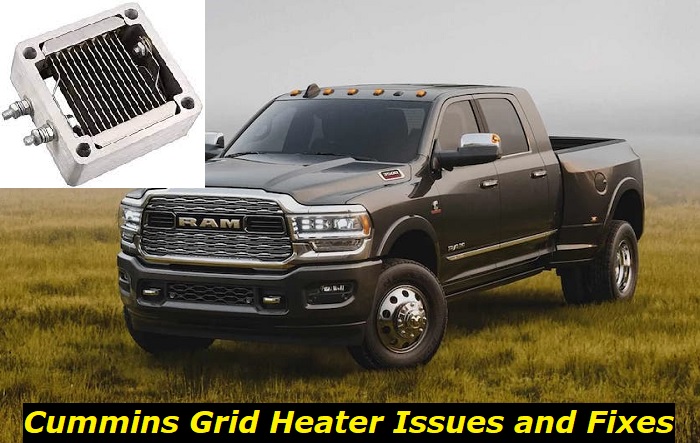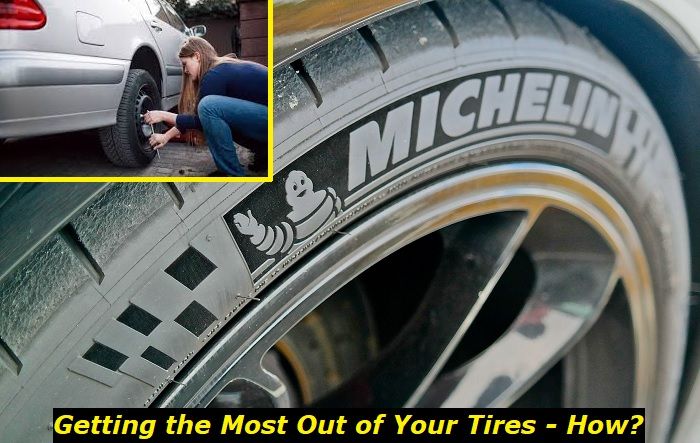Cummins is a leading manufacturer and distributor of engines. Among the engines Cummins manufactures include those that power RAM 2500, Chinese HD trucks, Nissan Titan trucks, and school buses, among others. There are over 30 different medium-duty to heavy-duty types of engines that one can buy from Cummins, which power many vehicles and machines all over the world.
Diesel engine problems highlights
- Level of importance:Medium
- Commonreasons:Age and mileage, aggressive driving, poor maintenance
- DIY inspection:In most cases, impossible
- DIY repair:Impossible
- Price for repair:$650 - $1,500
- Can you drive?Depends on the issue
- Ways to fix:Replace the worn-out parts, professionalrepair is usually possible only

What is a Cummins grid heater and what does it do?
To best understand what a Cummins grid heater does, we will first examine how the diesel engine works. Unlike a petrol engine, where a spark plug is required to ignite the compressed air and fuel in the combustion chamber, the diesel engine doesn't use one. In a diesel engine, combustion happens because air has been compressed at the right temperature, and diesel gets injected into the chamber.
Whether you have a Cummins direct or indirect injection engine, the piston moves away from the inlets and lets in the fresh air. Once the chamber is filled with air, the inlet is closed, and the piston moves back, compressing the air to a twentieth the size it was originally. At this point, diesel is injected into the compressed air and is ignited. This forces the piston to move back, thus ensuring full combustion of the diesel. Another outlet opens, letting out the exhaust gases and setting a start for a new combustion cycle.
Cummins diesel engines are equipped with an air heating grid located right on the main manifold. The purpose of this grid is to rise the temperature and charge the incoming air as it passes over it. Because the air has attained the acceptable temperature and charge, it becomes possible to ignite it once diesel has been added to it in the combustion chamber.
The Cummins grid heater helps you start your diesel vehicle, especially when the temperature outside is extremely low. The grid will work for the first and several other cycles or until the engine has reached the right operating temperature. The grid heater is, therefore, critical for making your car driveable.
Difference between grid heater and glow plug
Glow plugs and grid heaters are used for the same purpose - help in starting a diesel engine. A glow plug looks more like a spark plug and is found in the combustion chamber for direct injection engines. In your car, you will find a 'glow plug indicator light'. After pressing it, wait 2-5 seconds before you can go for the ignition. The vehicle should start on a first trial.
The plug, made using high resistance metal and pencil-shaped, warms to the point of becoming bright. The fuel injector spray pattern will inject diesel directly on the hot tip, making it possible to ignite the engine during cold weather. On the other hand, the grid heater warms the air flowing into the engine.
The Cummins grid heater problems
The grid heater installed on the Cummins diesel engines doesn't come without issues. Though it might seem to play a negligible role, especially in warm weather or in warm climates, it is a part that can bring you heartaches if it develops issues. Some of the issues are simple and can be solved by the car owner, while others are quite severe and will demand the replacement of major car parts. Let us look into these grid heater issues.
1) Grid heater killer bolt issue
This issue arises when the bolt used to hold the grid heater in place melts and falls off. The bolt is on the lower side of the grid, which means that if it comes loose, it will fall into the manifold. This often leads to disastrous consequences where the bolt gets sucked into the engine.
This issue was reported by some owners of RAM trucks that use 5.9-L. Owners of the 6.7-L have also reported the same issue. Cummins has designed the grid heater to be placed at the main manifold to heat the air flowing into the engine. The grid is connected to the solenoid, which gets power from the batteries. The solenoid gets a signal from the PCM to send the over 200 Amps current to the grid heater.
The high current going to the grid heater can make the insulating material around the rod holding the grid warp and crack. This then makes the metal melt, and the debris fall into the valves and the cylinder. Some RAM and other car owners whose engines are Cummins end up incurring upwards of $10,000 to replace an engine destroyed by this bolt.
- Symptoms and what causes the grid heater killer bolt issue?
It is important to note here that this issue is not common, but for the car owners who report it, the damage is usually extensive, and the repair work is expensive. There are no warning signs as to whether the bolt under the main manifold will fail.
The Cummins grid heater killer bolt problem is only known by the few mechanics and the very few car owners who have the misfortune of experiencing it. The engine will fail, and the power cable going into the manifold might be shaky, indicating that the bolt is no longer holding it tight.
- Solving the Cummins grid heater killer bolt problem
The manifold design seems to be the issue though Cummins has never admitted to this. Some car owners have opted to disconnect the grid heater, removing the risk of having their engine destroyed by the said bolt. Though it is pretty easy to do this, it is advisable to engage an expert to ensure the wires are disconnected properly.
There are car owners, particularly the RAM trucks, who can say they have sort of found a solution. The solution involves removing the stock manifold and replacing it with an aftermarket one that doesn't come with a grid filter. This intake manifold doesn't obstruct airflow as there is no grid filter. Instead, this manifold comes with a coil heater attached to its side and works in place of the grid heater.
2) Burning of the relay and Grid heater wire melting
Vehicles powered by the Cummins diesel engines also tend to develop wiring problems. Drivers who reported this issue say that upon turning the ignition key, they observed smoke coming from the engine.
On lifting the hood, some drivers discovered that the cable connecting the solenoid to the grid heater had burnt and melted. Others have found the relay to be the one with the issue. Because of the high current moving from the battery to the grid, any of the wires can be affected. The burning wire or relay means the grid heater will not work until the problem is corrected.
- A solution to this problem
The first thing you should do is turn off the ignition. Disconnecting the relay can also help, but all this is done to prevent the escalation of the issue. If you are lucky, all that is required is some first aid, and you are good to go. However, in many instances, replacing the cables might not be enough. The charring of the wire and the relay may have gotten to the solenoid which should be replaced too.
Conclusion
Cummins is a leading manufacturer of engines. The company has been around for many years and has become a point of authority in innovation and making reliable engines. The Cummins grid heater problem, therefore, catches many car owners whose car engines are Cummins by surprise. Still, a sizeable proportion of car owners feel the grid heater problem is real and are looking for answers before they can encounter the problem.
The best conclusion to the Cummins grid heater issue is to understand how serious the problem can get and the likelihood of encountering the issue. The grid heater is your must-have companion if you live in a cold place where winter is unforgiving, like Canada or Montana in the US. A failure on the part of this powertrain component may mean you will get stranded for hours in the wilderness. Therefore, you should seek professional help whenever you suspect the grid heater has a problem.
For people who rarely experience biting cold weather like in Florida having a grid heater on your Cummins engine might be counterproductive. You can ignore it, or you can disconnect if it bothers you. Owners of RAM trucks can opt to change the factory intake manifold with the aftermarket option, which seems to erase the grid heat problems. But the bottom line is that the number of cars affected by this issue is very low.
About the authors
The CarAraC research team is composed of seasoned auto mechanics and automotive industry professionals, including individuals with advanced degrees and certifications in their field. Our team members boast prestigious credentials, reflecting their extensive knowledge and skills. These qualifications include: IMI: Institute of the Motor Industry, ASE-Certified Master Automobile Technicians; Coventry University, Graduate of MA in Automotive Journalism; Politecnico di Torino, Italy, MS Automotive Engineering; Ss. Cyril and Methodius University in Skopje, Mechanical University in Skopje; TOC Automotive College; DHA Suffa University, Department of Mechanical Engineering






Add comment